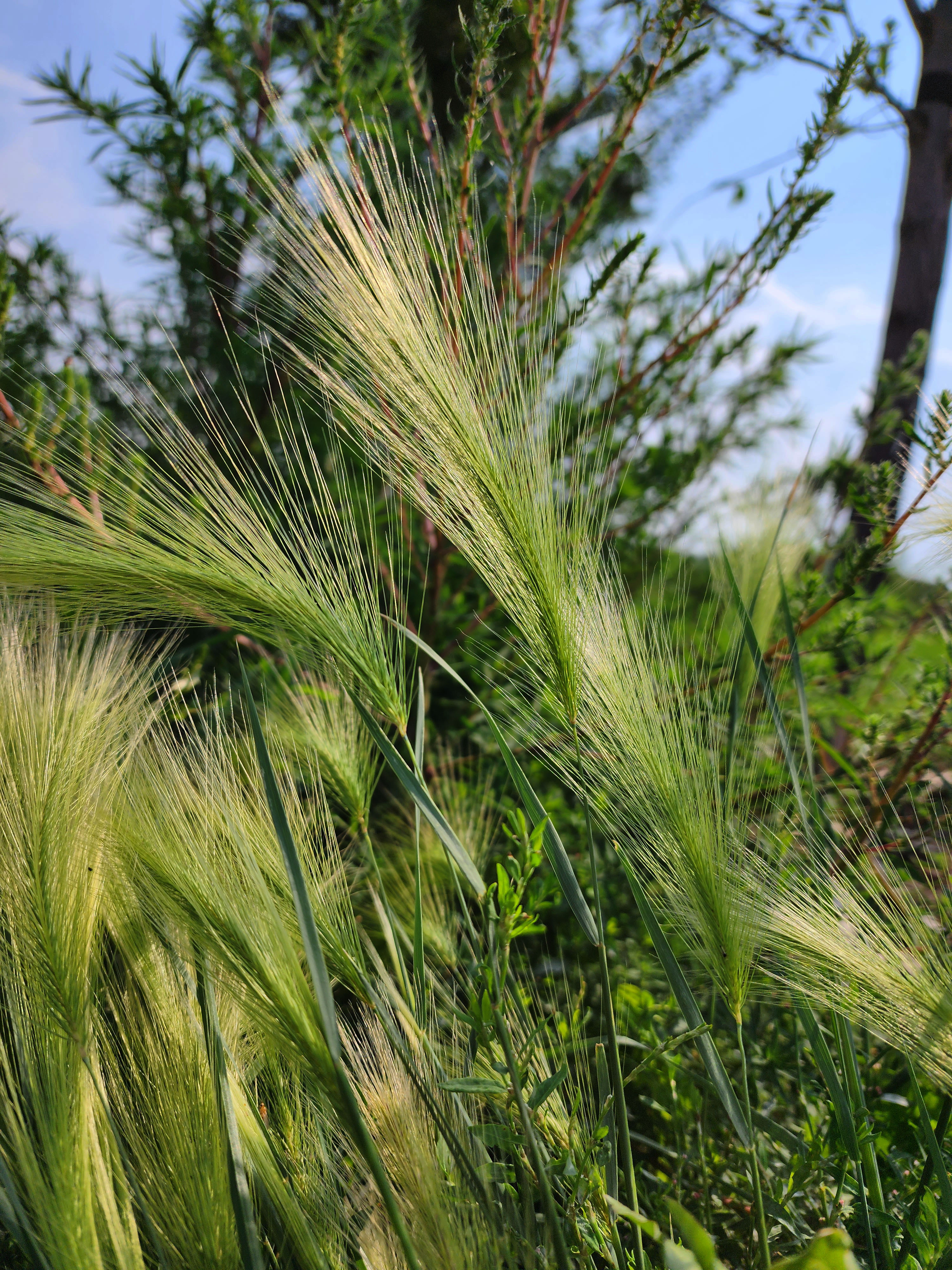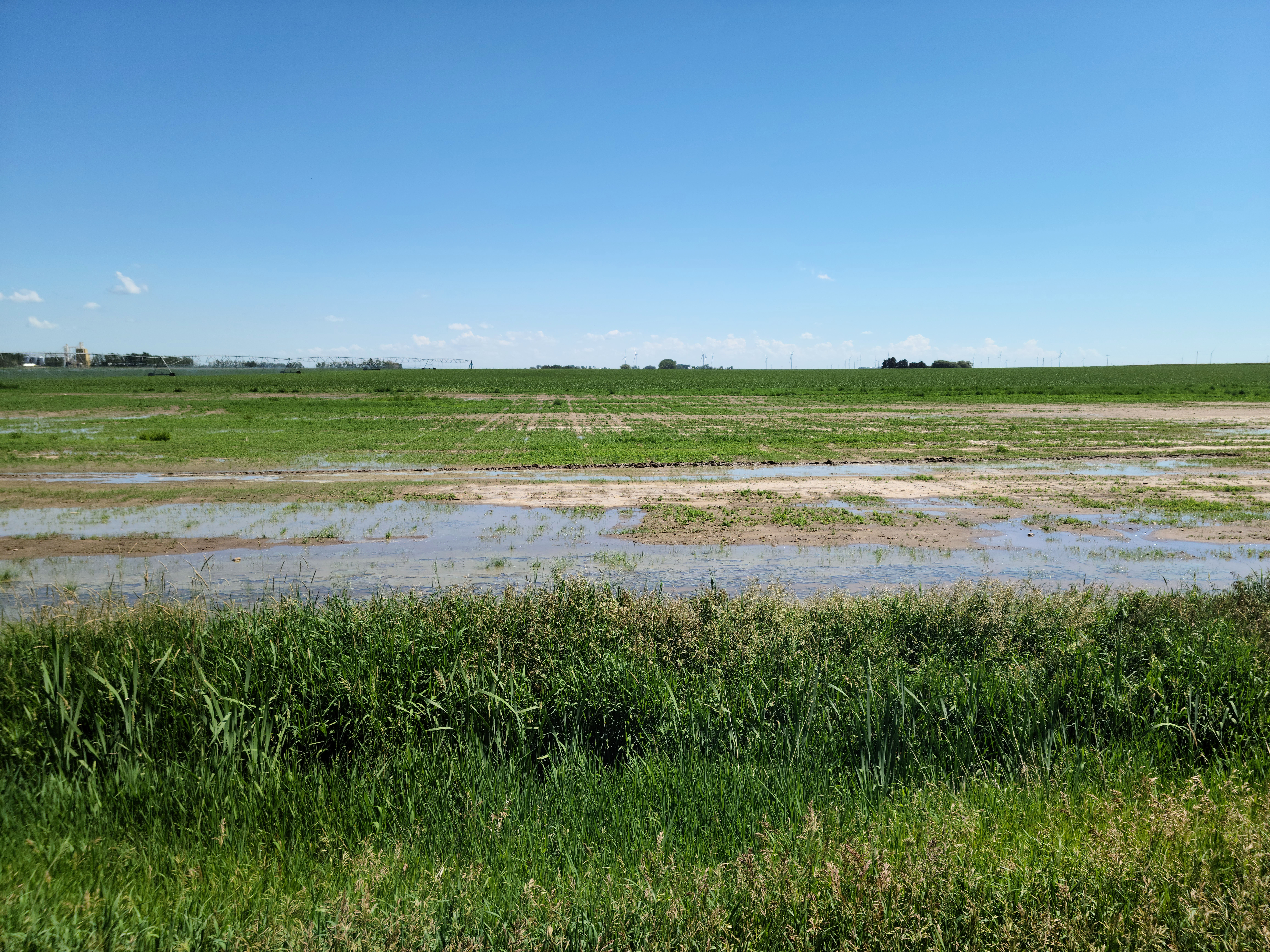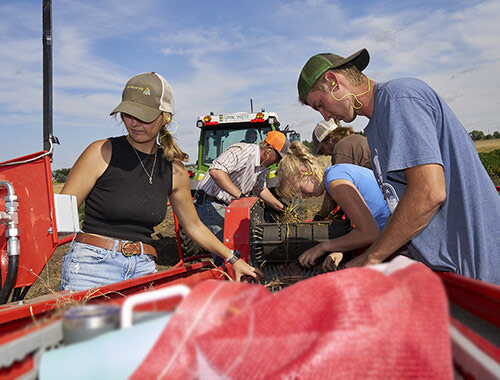Salinity issues are a prevalent concern in numerous areas of the Prairies, and the risk of salinity development looms large.
Salinity arises when surplus groundwater builds up in the recharge zones and flows laterally, picking up soluble salts along the way. These salts eventually settle just beneath the discharge area, where water evaporation leaves behind salt deposits that accumulate over time.
Alternatively, ditch water can flow laterally into fields, where it evaporates, leaving salts in the rooting zone. Frequent wet-dry cycles of precipitation also tend to exacerbate salinity issues. The water table rises and transports salts throughout wet years, while dry conditions lead to salt accumulation on the surface. Various factors including groundwater flow dynamics, surface drainage patterns, agricultural practices, climatic conditions, and the inherently saline nature of certain Alberta soils tend to affect the formation of saline seeps. The elevated salt concentration in saline seeps hinders plant roots from absorbing water and essential nutrients, ultimately stunting or preventing plant growth and reducing crop yields.
|
|
|
Image Caption: Foxtail barley |
Saline soils can be identified by observing patchy crop growth and often spotting white crusts on the soil surface. In the initial stages of salinity development, salt flecks may be visible on the surface before the white crust emerges. Some salt-tolerant weeds, like foxtail barley, may flourish due to the abundance of water associated with salinity. However, there is also a less obvious form of salinity affecting farmers – invisible salinity, which doesn't manifest with the typical white crusting.
In the early-2000s, Agriculture and Agri-Food Canada estimated that approximately 1.4 million hectares in the Prairies suffer from moderate-to-severe salinity resulting in a 50% reduction in productivity, while an additional 10 million hectares suffer from low salinity.
In the next article of this series, we will explore mechanical and biological mitigation options that could offer solutions to this pressing problem. Addressing salinity is vital for sustaining agricultural productivity and securing the future of farming in the region.
|
|
|
Image Caption: A saline spot in-field, marked by kochia and trademark white spots. Crops will have tremendous difficulty growing in these areas as the root zone will have a much higher concentration of salt than the surface. |
|
|
|
Image Caption: A low spot, full of water that will leave salt deposits as it evaporates. |
|
|
|
Image Caption: A large saline spot in a field. The salt deposits are large enough to give the illusion of dirty snow. |







